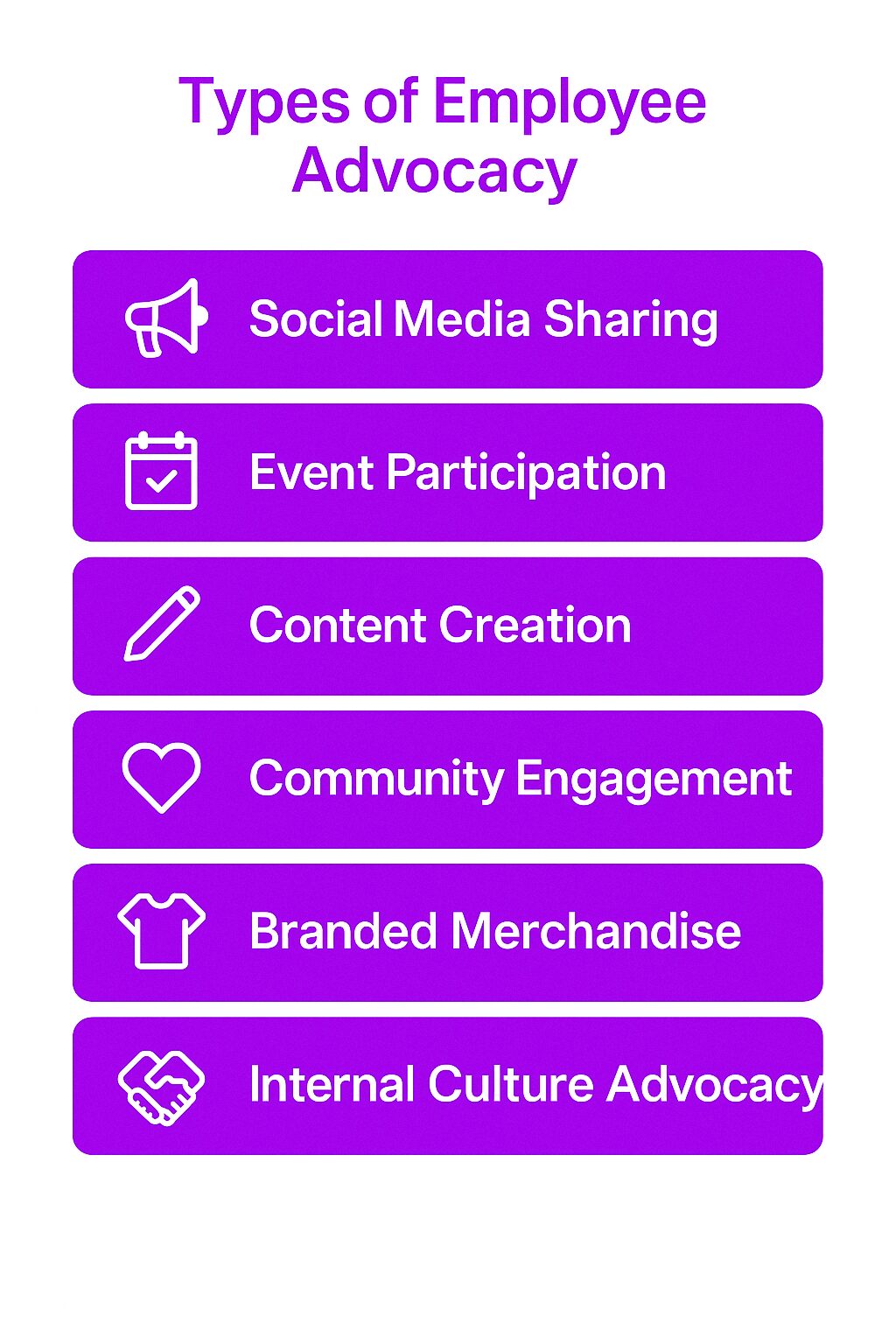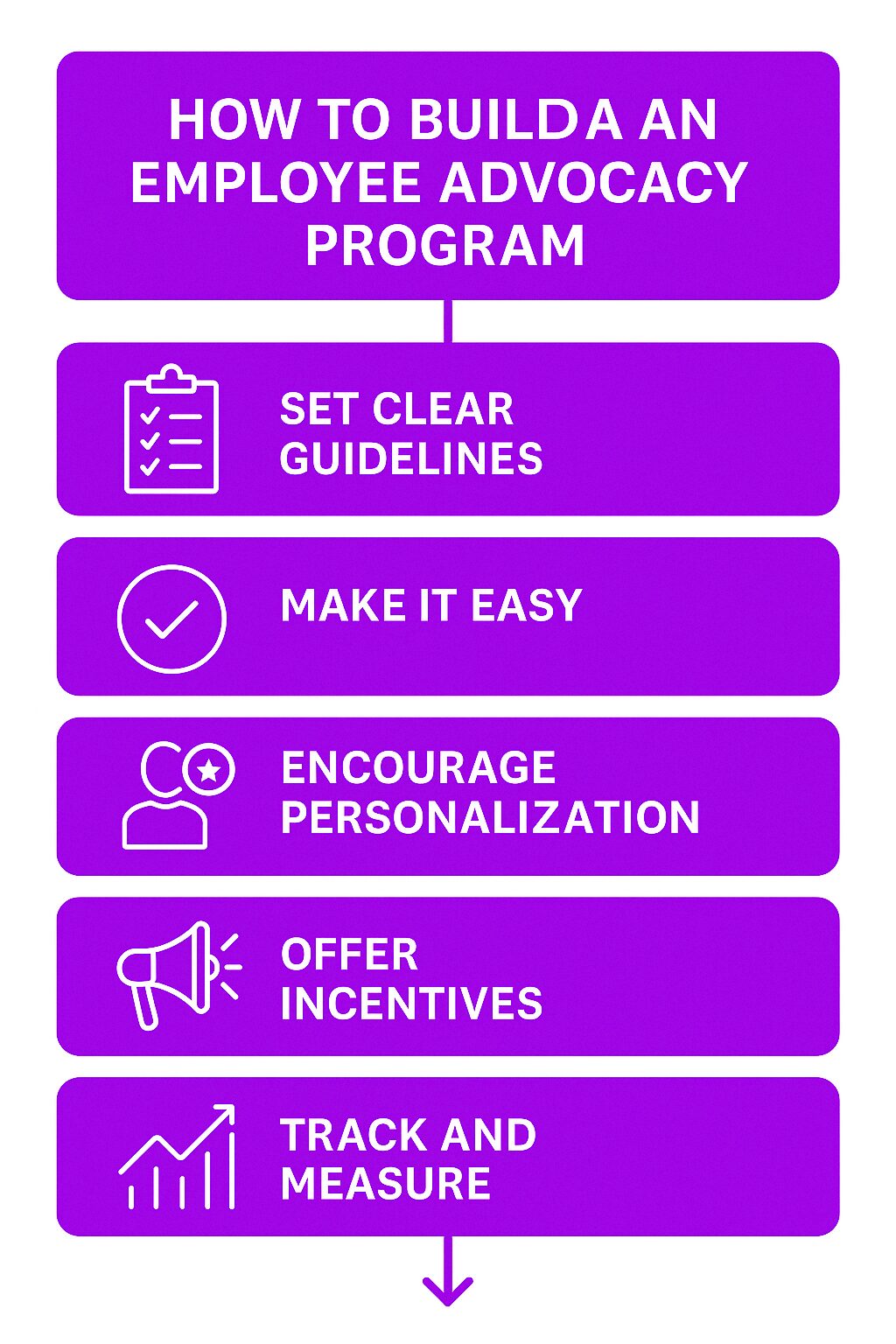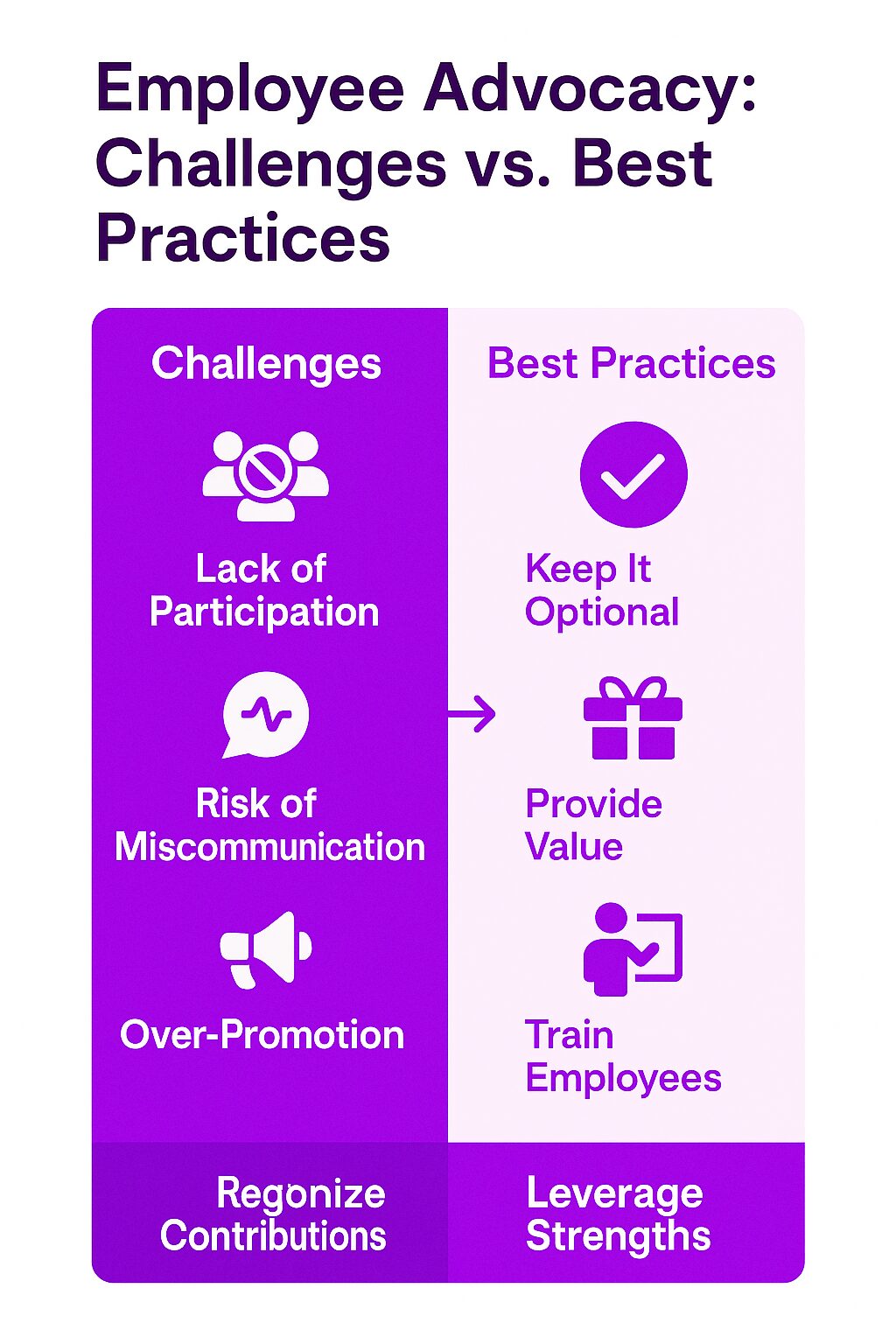What is Employee Advocacy?
Employee advocacy is when employees voluntarily promote their company to their personal and professional networks. This can happen through social media, word-of-mouth, public speaking, or even wearing branded merchandise. Unlike influencer marketing, where individuals are paid to promote a product or service, employee advocacy is about genuine, unpaid promotion.
Many companies create structured employee advocacy programs to encourage this kind of engagement. These programs provide guidelines, content, and incentives to help employees feel comfortable and excited about sharing company-related news, benefiting both the company and the employees. When done right, it boosts brand awareness, strengthens trust, and amplifies marketing efforts without the high costs of paid advertising.
Why Employee Advocacy Matters
When employees talk about their company, it feels more authentic than a corporate ad or social media post. People trust recommendations from friends, family, and colleagues more than they trust businesses. Employee advocacy takes advantage of this by making employees natural brand ambassadors.
Companies also benefit from increased visibility. Employee posts typically get more engagement than corporate social media accounts because they feel personal and relatable. This can help with recruiting, marketing, and customer acquisition. Internally, advocacy strengthens company culture by making employees feel more connected and valued. This authentic promotion leads to increased brand awareness and trust among potential customers.
Types of Employee Advocacy
Social Media Sharing
One of the most common forms of advocacy is employees sharing company news, job openings, or achievements through personalized social media posts on platforms like LinkedIn, Twitter, or Instagram.
Event Participation
Employees who speak at conferences, attend networking events, or participate in webinars can indirectly promote their company. Even a simple LinkedIn post about an event can boost visibility.
Content Creation
Some employees go beyond sharing—they create their own content. This could be blog posts, podcasts, videos, or thought leadership articles that align with the company’s mission. Using an employee advocacy tool can streamline the process of content creation and sharing, making it easier for employees to contribute effectively.
Community Engagement
Volunteering or participating in social impact initiatives shows the company in a positive light. Employees who post about charity events, corporate responsibility programs, or community service projects contribute significantly to the company’s employee advocacy efforts and help shape the brand’s image.
Branded Merchandise
Wearing company swag, using branded items, or simply having a well-designed company laptop sticker can spark conversations and curiosity.
Internal Culture Advocacy
Advocacy isn’t just about external promotion. Employees who are engaged and enthusiastic internally can influence their coworkers, reinforcing a strong company culture.
How to Build an Employee Advocacy Program
Set Clear Guidelines
Employees need to know what’s okay to share and what isn’t within the company’s employee advocacy program. A clear social media policy can prevent accidental oversharing or brand misrepresentation.
Make It Easy
The more friction there is, the less likely employees will participate. Providing ready-to-share posts, branded templates, or an easy way to track engagement makes advocacy more appealing. Implementing an employee advocacy platform can simplify the process of tracking engagement and sharing content, making advocacy more appealing.
Encourage Personalization
Employees should share content in their own voice. Copying and pasting corporate messaging feels robotic and less authentic.
Offer Incentives
While advocacy should be voluntary, some encouragement helps. Recognition, internal competitions, or small rewards can increase participation.
Track and Measure
Measure advocacy efforts using engagement metrics, brand mentions, and referral traffic. This helps companies understand what’s working and what needs improvement. Using employee advocacy software can help measure engagement and ROI, providing valuable insights into the effectiveness of the program.
Benefits of Employee Advocacy
For the Company
-
Wider Reach: Employees collectively have more connections than corporate social media accounts.
-
More Engagement: Personal posts get more interaction than company posts.
-
Stronger Employer Brand: Attracts top talent by showcasing company culture.
-
Cost-Effective Marketing: Reduces reliance on paid ads. A well-defined employee advocacy strategy can significantly enhance brand visibility and credibility on social media.
For Employees
-
Professional Growth: Employees who share industry insights position themselves as thought leaders.
-
Recognition: Active advocates are often recognized internally and externally.
-
Networking Opportunities: Engaging on social media helps employees build connections in their field. Active participation in advocacy programs also boosts employee engagement and morale.
Challenges of Employee Advocacy
Lack of Participation
Some employees may not feel comfortable sharing work-related content. Encouraging participation without making it feel forced is key, and companies should find ways to encourage employees to share content voluntarily.
Inconsistency
If only a few employees participate, advocacy efforts can feel scattered. A well-structured formal employee advocacy program ensures steady engagement and consistent messaging.
Risk of Miscommunication
Without proper guidelines, employees may share inaccurate or inappropriate content. Training and clear messaging help avoid this.
Over-Promotion
If employees feel pressured to constantly share company content, it can become exhausting and reduce authenticity.
Best Practices
Keep It Optional
Forced advocacy doesn’t work. Employees should feel excited, not obligated, to share about their company.
Provide Value
Advocacy isn’t just about promoting the company—it should benefit employees too. Provide industry insights, career-building content, or networking opportunities.
Train Employees
Not everyone is comfortable using social media for professional purposes. Offering training on personal branding, LinkedIn optimization, and content sharing can boost confidence. Providing employee advocacy tools can simplify tracking and sharing, enhancing employee confidence and participation.
Encourage Internal Champions
Some employees will naturally embrace advocacy. Identify these people and empower them to lead by example.
Leverage Employee Strengths
Not everyone wants to post on LinkedIn. Some might prefer creating videos, writing blog posts, or speaking at events. Allow employees to advocate in ways that suit them.
Real-World Examples
A Tech Employee’s LinkedIn Post
A software engineer shares a personal story about how their company supported remote work, generating high engagement and attracting job applicants. This example highlights the importance of having an own employee advocacy program to empower employees to share their experiences.
Conference Speaking Engagement
A cybersecurity expert represents their company at an industry event, subtly reinforcing their employer’s authority in the field.
Instagram Stories Featuring Company Culture
Employees post behind-the-scenes moments at work, showcasing a great workplace culture to potential candidates.
Thought Leadership Blog Posts
A marketing manager writes an article on industry trends, indirectly positioning their company as a leader in the space.
Final Thoughts
Employee advocacy is one of the most powerful yet overlooked marketing and branding tools. It’s an authentic way to build trust, reach new audiences, and strengthen company culture. The key is to make it easy, rewarding, and voluntary. When employees feel connected to their workplace, they naturally want to share their experiences—turning them into the best brand ambassadors a company can have.







